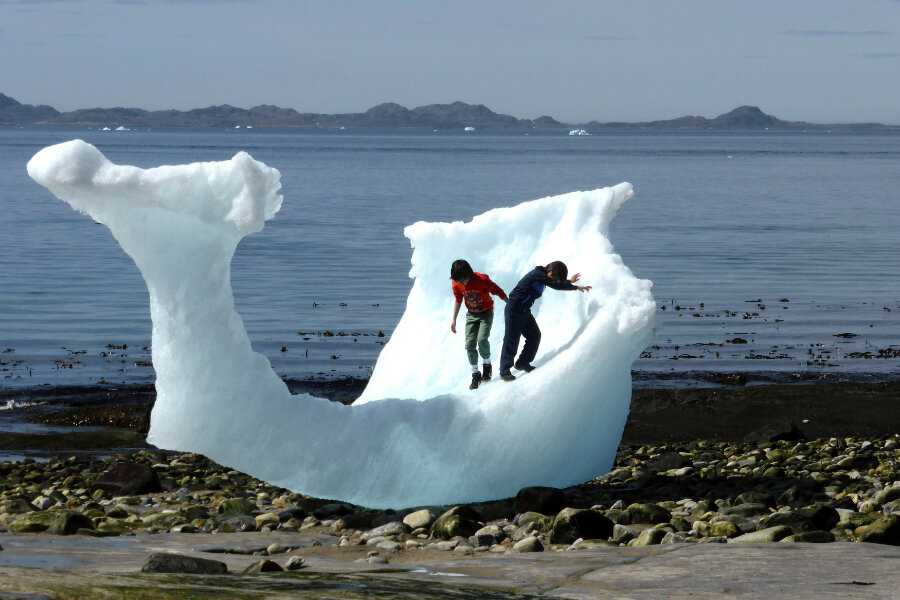For millions of years, Greenland had almost no ice
Loading...
Two studies published in the journal Nature on Wednesday reached opposing conclusions about historical ice melt in Greenland, highlighting the challenges of conducting research in the region – and the unknowns that scientists still face regarding the island's geologic past.
One study, led by Joerg M. Schaefer from the Earth Institute at Columbia University, illustrates instability in Greenland ice cover, claiming that the area may have been ice free for an extended period of time in the past million years; the other study, written by Paul Bierman from University of Vermont in Burlington, contended that ice covered eastern Greenland for the past 7.5 million years.
But the scientists involved in both studies and other observers say that the conclusions don’t necessarily contradict each other. Difficulties in obtaining data from the ice-covered Greenland has hampered scientists’ research efforts in the past two decades, and lab techniques required to examine the rock and ice cores were only developed relatively recently, thus leaving many questions unanswered about the stability of Greenland’s ice cover.
Yet understanding Greenland’s geologic past may be crucial to current climate models: If global warming continues at its current trend and all of Greenland’s ice melted – predicted by some to occur some 2,500 to 10,000 years from now – it could raise sea levels by seven meters. It has already seen record high summer temperatures and unprecedented early ice melts this year.
Describing the contrasting results, Professor Bierman compared the two papers to “the parable of blind men feeling an elephant,” according to Nature.
“They have the tip of the tusk, and we have a large side of the flank,” he said. “Together they can really inform each other.”
Professor Schaefer’s study draws from his team’s examination of bedrock cores pulled from nearly two miles below the summit of the Greenland ice sheet. It took five summers for a US scientific team, culminating in 1993, to drill through 10,000 feet of ice and sediment and punch through five feet of bedrock to obtain the cores. Lab techniques sophisticated enough to examine the bedrock were only available in the past year or so, coauthor Robert Finkel from the University of California, Berkeley, said in a press release.
To determine if the bedrock was covered by ice in the past, they tracked traces of radioactive beryllium-10 and aluminium-26, two isotopes produced by exposure to the sun, in the core sample. The authors concluded from the results that the surface was exposed to open sky for at least 280,000 years in the past 1.4 million years.
But that runs counter to Bierman’s study. His team also investigated the presence of the two isotopes, but they drew their samples from marine sediments off the east coast of Greenland, a region that is home to many highlands. Their analysis came to the conclusion that glaciers covered Greenland throughout the past 7.5 million years.
One possibility for the diverging results suggested by some scientists is that ice may have still covered the tips of Greenland’s east coast given its higher altitude while the rest of the island experienced ice melt. Bierman also noted that his study looks at long-term averages, thus it might miss short-term changes.
“We’re facing a climate that you can deny all you want, but the data shows it is getting warmer. There is zero debate in the scientific community that if it's going to get warmer, Greenland is going to melt. And sitting in Greenland are the equivalent of seven meters (23 feet) of sea level rise,” Bierman told Popular Science. “I don’t think this is a trivial problem by any means. We need to understand how the Greenland ice sheet functions over time because it is the best way we’re going to figure out what’s going to happen in the future as we tweak our climate.”
A consortium of US scientists have successfully designed a machine capable of speeding up deep ice-drilling processes, potentially obtaining half-dozen samples each year from Greenland or Antarctica, Jeff Severinghaus, paleoclimatologist at Scripps Institution of Oceanography said in the Columbia University press release.
The machine is waiting to be deployed once it receives enough funding.








